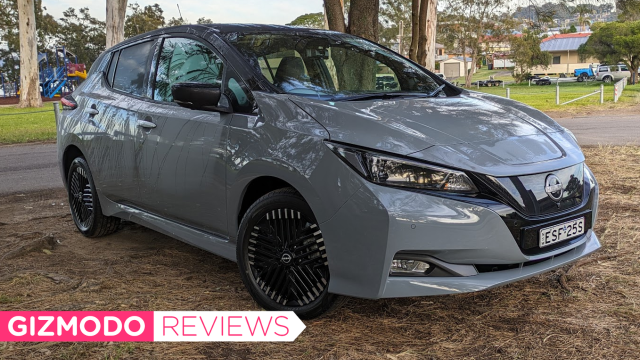Nissan has been in the electric vehicle game for a lot longer than almost everybody else. Since 2010, Nissan has been refreshing its ‘Leaf’ vehicle every now and again, to the point of last year when it received a facelift. Unlike in 2010, however, the Leaf is now competing with a much, much bigger market, facing competition from cars with better range, better storage capacity, and lower prices.
It’s this train of thought that makes me think bittersweetly about the Nissan Leaf. While it’s no small feat that the company has been doing electric cars for more than a decade now, the newest iteration of the Leaf (released in Australia in late 2022) seems outdated, under-spec, and overpriced when compared to its closest competition.
I spent a week with the Nissan Leaf e+, the up-spec version of the Leaf with a bigger battery, and after clocking more than 600km travel with it, I reckon the car is due for a major overhaul.
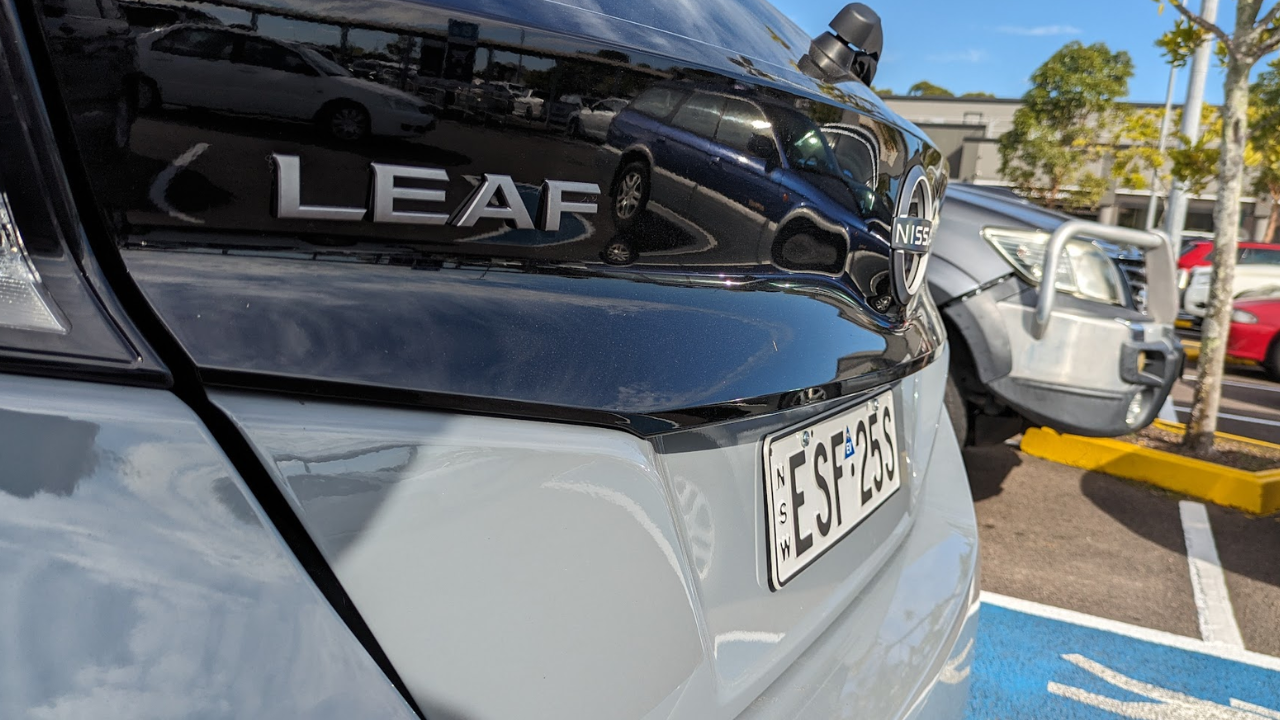
Make like a tree
Before we get started, my general impression of the Nissan Leaf is that it was fine. It was severely lacking in any tangible quality that made it rise above any other electric vehicle in Australia, with a 0-100km/h speed in 7.9 seconds, and a presence on the road that felt well-mannered but not any better than any other electric vehicle on the market (the Leaf is a FWD, and I only noticed a loss of traction when strongly accelerating from a full stop).
The 385km range of the e+ variant falls just below what I would consider a comfortable expectation (about 400km), but it felt just about as manageable as any EV. Though when highway driving over two hours I noticed a range estimation drop-off of about 40km, it felt in-line with many of the other EVs I’ve driven (the Leaf is also intended as primarily a city car). There’s also a temporary-use spare tyre located under the car.
I can’t fault the Leaf for how it looks. The raised panelwork lip between the boot and the rear doors, along with the two-tone colour around the car, and its sporty front end make the car quite attractive. The ‘Zero Emission’ badge that existed on the front doors and boot of previous models has also been taken away on the 2023 refresh – a terrific choice considering it didn’t add anything to the style, and we get it, you’re an EV.
All of this said, I don’t think it’s with much resistance that the Nissan Leaf can be considered a tough sell among much better cars at its price point.

The base model Nissan Leaf starts at $50,990 in Australia, and comes with 270km WLTP range. Similarly:
- The MG ZS EV Excite costs $44,990 and comes with 320km WLTP range
- The standard BYD Atto 3 costs $48,011 and comes with 345km WLTP range
- The BYD Atto 3 Extended Range costs $51,011 and comes with 420km WLTP range.
Meanwhile, over in the U.S., the cheapest model of the Leaf starts at just $US27,800, or $41,759 in Australian dollars. That’s quite the price hike for us Aussies. It’s immediately not looking good for the humble Leaf, but it somehow gets worse.
The Nissan Leaf e+ starts at $61,490 in Australia, and comes with 385km WLTP range. Similarly:
- The Polestar 2 Standard Range Single Motor costs $58,091 in Australia and comes with 478km WLTP range
- The Cupra Born costs $59,990 in Australia and comes with 511km WLTP range
- The Hyundai Kona Electric Extended Range Elite costs $60,500 and comes with 484km WLTP range
- The Tesla Model 3 Standard Range Plus costs $61,300 in Australia, and comes with 491km WLTP range.
In terms of cost and range, the Leaf is easily outdone by cars around its price point, without much to offer to make up for these points.
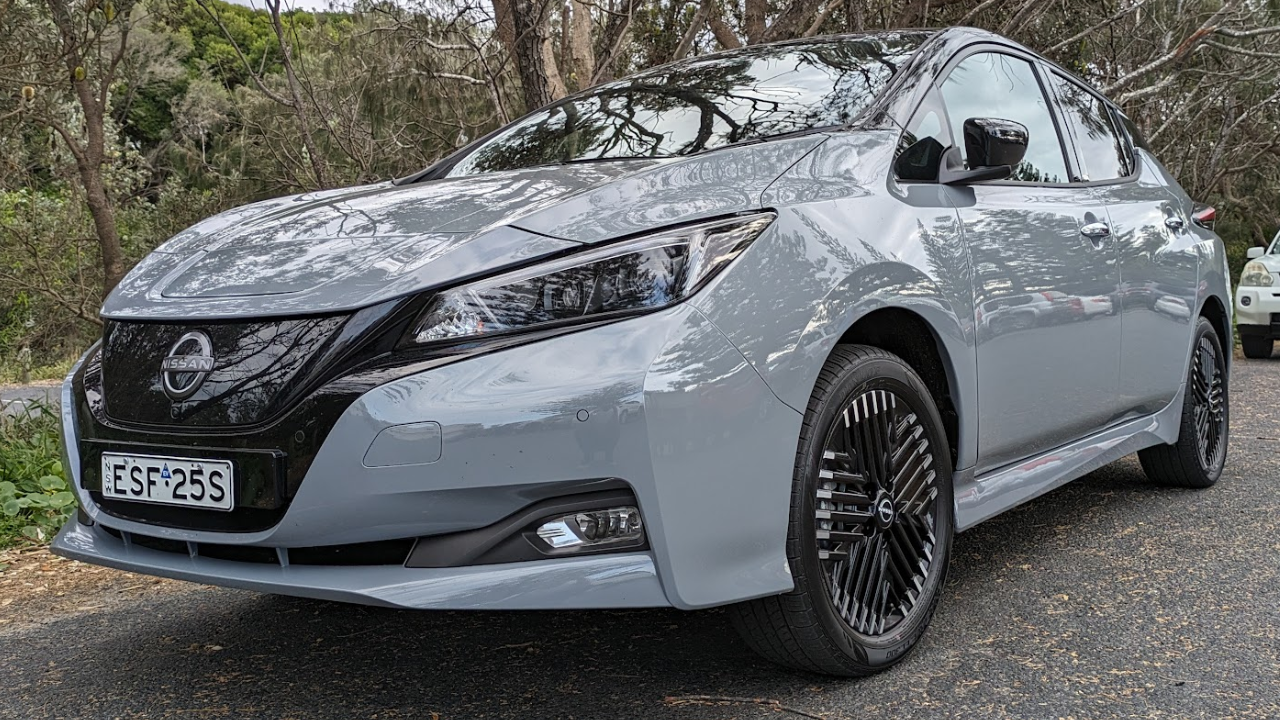
It doesn’t end here though. The standard model Leaf can charge at a maximum of 50kW using a public charger, while the Leaf e+ can charge at up to 100kW (max kW trickles off as the battery is filled).
Comparatively, across the board:
- The BYD Atto 3 can charge at a maximum of 89kW
- The Polestar 2 can charge at a maximum of 133kW
- The Cupra Born can charge at a maximum of 135kW
- The Tesla Model 3 can charge at a maximum of 170kW.
This means that, with a Leaf, you’re going to be spending more time charging up in public. The long charging stops dreaded by EV drivers are made no easier by the Leaf’s slower charging speeds. Additionally, the fastest charging is supported through CHAdeMO, a Japanese standard unique to Japanese vehicles. Not every public charging station has a CHAdeMO cable, which can make fast charging quite limiting (though there is a Type 2 port for slow charging, which is what the included emergency cable uses).

And these are just the starting points. There are a bunch of other things that I can pick the Leaf apart for, in particular, its small cabin and boot space (to be fair, it’s a hatchback, while most other EVs are SUVs, though more are now available) and its lack of electric adjustment seating, but I feel like you get the point here – the Nissan Leaf is too expensive for its own good. On paper, it just can’t compete with these other cars.
But although it seems like almost every feature of the Nissan Leaf feels dated by at least two years, there is one feature that I will rave about.
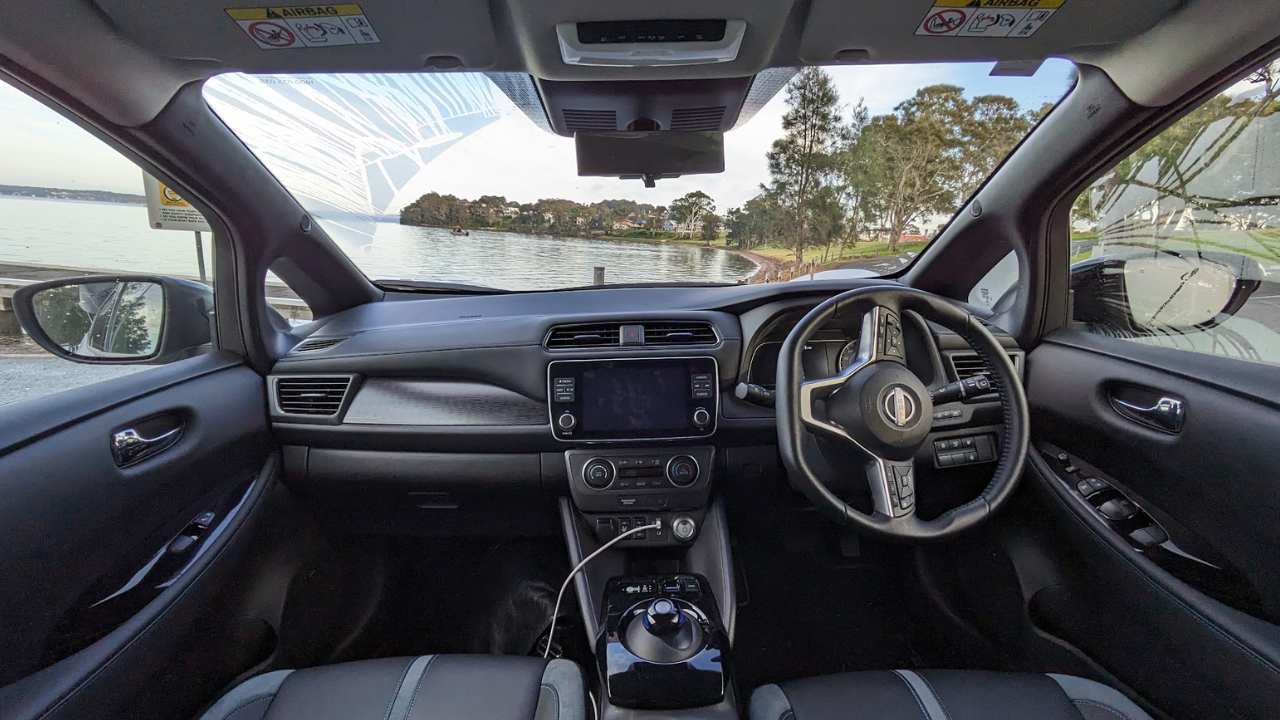
Leaf the buttons in
Buttons! The Nissan Leaf has ’em!
The interior of the Nissan Leaf lacks the futuristic flare of similarly-priced electric vehicles (perhaps excluding the MG ZS EV and the Hyundai Kona). It’s much less exciting to look at and be inside of.
However, it keeps the buttons in, and they are physical. Not haptic touch buttons like in the Cupra Born, and not based entirely within the touch screen like the Tesla Model Y, but many of the car’s important features are handled via separate buttons.
My reason for loving this is simple: physical buttons give you an affirmative, felt confirmation that you’ve pressed a button. You don’t need to look at the button or screen to check – you know it has been pressed in enough. It’s difficult to get this sort of affirmative control with a touchscreen, and although I know the Nissan Leaf likely only has the buttons as a byproduct of its time without an internal refresh, I very much appreciate the buttons being here.
While we’re inside the car, let’s talk about its features. The car has smart cruise control where it’ll lock to a speed, while keeping pace from the car in front (with up to three distances as options). There’s an ‘eco’ mode, that lets you reclaim between 10 and 20km range with the car limiting acceleration, and there’s an ‘e-Pedal’ mode that lets the car automatically brake when you raise your foot off the accelerator (to reclaim some battery life through regenerative braking). Nothing surprising here for an EV, but worthy of note.
The shifter is a fairly straightforward nub in the centre console, and the camera integration is satisfactory, however, the camera quality is quite low. The resolution of the forward and reverse cameras seems less detailed compared to every other car I’ve reviewed. This made it more difficult to see some objects in detail, such as curbs, or posts, especially if the camera had been covered in water from rain, so as a city car, I’d be concerned about being able to see everything I need to when parking in tight spots (thankfully, there were also sensors that activated noise warnings when getting too close to an object). But, the car features a 360-view camera – something I absolutely love having on a car.

Internal space is quite limiting, which isn’t too surprising given that it’s a hatchback, but the driver’s seat is comfortable and the car’s buttons feel well-spaced from each other. Additionally, the view through the rear window was also great and unrestrictive, terrific for when reversing out of tight spots.
The rear mirror also doubles as a camera when you click it down into what you’d expect to be night mode.
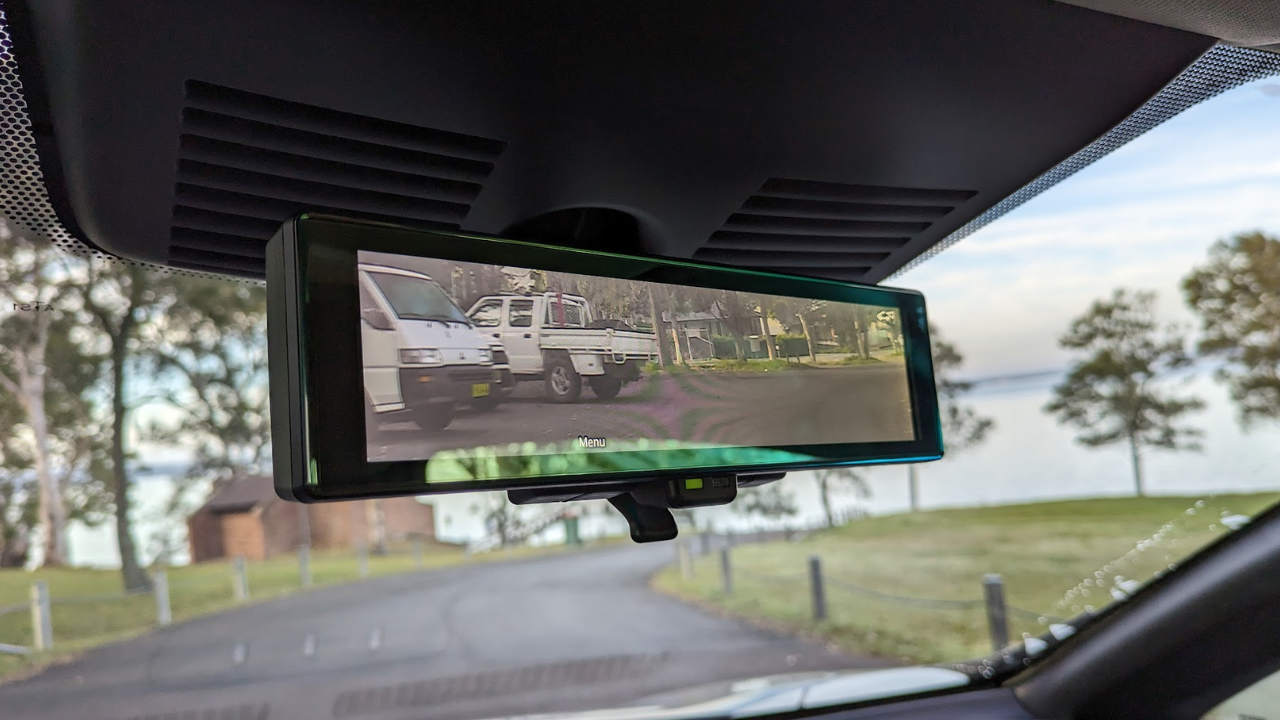
Leaf it behind
An overhaul for the Nissan Leaf is badly needed. The good news is that the production of a new model is expected in 2026, and that perhaps more importantly, Nissan has kind of moved on. The Nissan Ariya, an SUV with a drastically different design both inside and out, seems more like a sensible electric vehicle for the moment than the Nissan Leaf, given the popularity of SUVs internationally. If the Ariya were to come to Australia, it may cost around the $67,000 price point and compete with the Hyundai Ioniq 5 and Tesla Model Y.
What I’m getting at here is that the Nissan Leaf doesn’t really make sense anymore. It’s not cheap, its range isn’t competitive, it feels dated to be inside of, and it’s quite a small car. It’s only if you’re attracted to the smaller size of the Leaf compared to other EVs that it might seem like a sensible purchase (or if you crave having buttons).
When I dropped off the Nissan Leaf e+, I walked out onto the street, and ordered my Uber – it was a BYD Atto 3. When I got in, I was instantly reminded of what our expectations for these cars, which are not cheap, should be. The insides felt new and distinct, the car’s infotainment system was intuitive and larger, and the vehicle’s exterior looks just as good. Sure, the Atto 3 is an SUV and ultimately a different class of car, but it’s also much cheaper with greater range.
The Nissan Leaf starts at $50,990 in Australia, and the Nissan Leaf e+ starts at $61,490.
